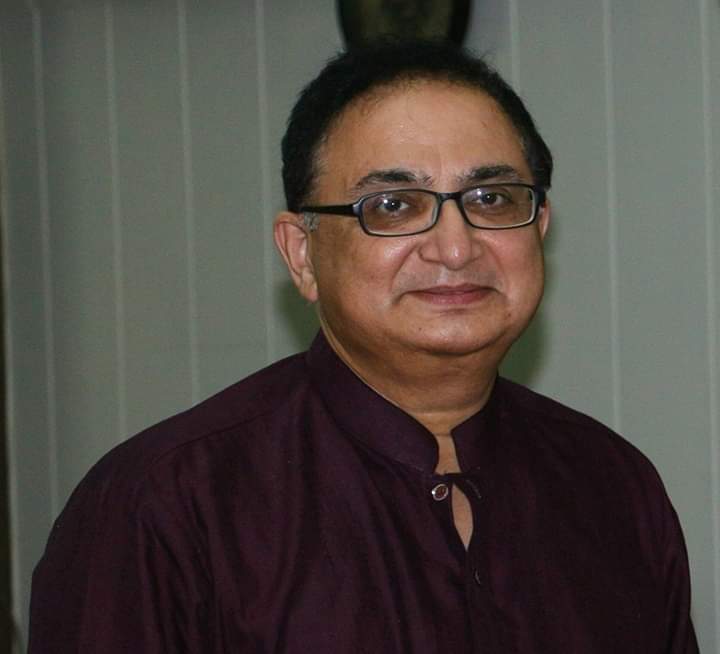Following the theme of our Astrobiology edition, we asked some renowned personalities of Pakistan to share their views on man’s search for life. In this part, we have Dr. Farrukh Shahzad, Founder of Pakistan Astronomers, answer our questions.
Questions on Astrobiology
- 1. How do you view astrobiology? What will be your definition of it?
- 2. How many chances are there for the existence of ExtraTerrestrial life and has it made any contact with us yet?
- 3. What do you think about the “WOW Signal” and other theories about regarding aliens?
- 4. What can life look like on other planets? Can it be like what we see in popular culture or not?
- 5. Should we able to unravel the mysteries about our origin on this planet after learning about ExtraTerrestrial life? How can it be so?
Also Read: Mansoor Ahmed on Astrobiology
A medical doctor by profession, Dr. Shahzad had a passion for Astronomy since childhood and now he is the President of PakAstronomers, Islamabad. He is also an astrophotographer and regularly holds Astronomy events in Islamabad and Rawalpindi in public places and different institutions like Comsats, NUST, and IST. Here is what he had to say:
1. Astrobiology is a branch of science that probes into the origin of life, its evolution and spread in the universe and its future. It is specifically concerned with extra-terrestrial life and the factors responsible for its development. But to answer these questions we must first know how life developed on Earth.
2. In my opinion, there is a high likelihood of finding Extraterrestrial life, but there is less chance that it would be intelligent life. Billions of years are required for life to reach the stage of technically advanced civilization, for which a very stable and safe star system is required. For example, a simple Gamma-Ray Burst from a nearby Neutron Star can wipe out life on an entire planet. Detection of Carbon dioxide in a planet’s atmosphere is a sign that life may exist on it. Earliest signs of life on Earth date back to 3.7 to 4.1 billion years. Likewise, I don’t think that any Extraterrestrial life has made contact with us.

3. The “WOW Signal” is a mystery. Received on August 15, 1977, by the Big Ear Radio Telescope in Ohio and later on discovered by Astronomer Jerry R. Ehman. It was a narrow band signal (10 kHz) that lasted only 72 seconds, corresponding to a natural oscillation of Hydrogen at 1420 MHz, coming from the region around constellation Sagittarius. The most probable explanation is that it came from hydrogen clouds surrounding two comets, 266P/Christensen and 335P/Gibbs that were roughly at the same spot the signal seemed to emanate. Due to lack of its repetition despite several attempts and the fact that it was an unmodulated wave-like signal with no encoded information, it is unlikely that it was sent by aliens.
4. Life can take any form from simple unicellular organism to advanced species capable of changing its environment. Likewise, life on other planets may range from a simple organism to advanced civilization. Yes, it can look like what we see in popular culture or it can be completely different. But one thing the scientists agree that the basic building blocks of all life forms must be based on six main elements: Carbon, Nitrogen, Oxygen, Hydrogen, Phosphorus, and Sulfur. The carbon atom is unique as it can make four strong bonds with other elements and is building block for all the organic compounds and all living things on Earth. It is therefore presumed that Extraterrestrial life would also be carbon-based.
5. Origin of life on Earth, the mysteries are just unraveling, and we may never know all the answers, but there are a few basic things the scientists agree upon:
- Our Sun, medium-sized yellow star with a stable lifespan of 8 to 9 billion years.
- Our position in the Solar system, the habitable zone or the Goldilocks zone, where liquid water can exist.
- The Outer Giant planets Jupiter and Saturn protect Earth by deflecting giant objects and asteroids, thus helping life take hold on our planet.
- Our Moon, formed around 4.5 billion years ago when a Mars-sized object hit Earth. Face-locked Moon helped stabilize Earth’s rotation, thus 24 hours day-night cycle, a stable climate and ocean tides that bring nutrients from deep in the oceans to the land and helped life getting a hold on dry land.
- Plate Tectonics that helped form Volcanoes and giant mountain ranges and emission of Carbon Dioxide into the atmosphere.
- Active Outer Core made of liquid Iron and Nickel that rotates to from Giant Magnetic field around Earth protecting life on Earth from deadly Cosmic radiation and Solar wind.
- The volume of Oceans or Water on Earth which constitute 71% of the surface of Earth.
- Earth’s Atmosphere and its composition, about 480 km thick; 78% Nitrogen and 21% Oxygen. But the early Earth atmosphere consisted mainly of Nitrogen and Carbon dioxide.
- Diversity of species and Ecosystem ensure the sustainability of life on Earth. Plants are vital for converting carbon dioxide to oxygen. Bacteria and carnivores regulate the carbon cycle. All the living things on Earth are dependent on each other for survival.


